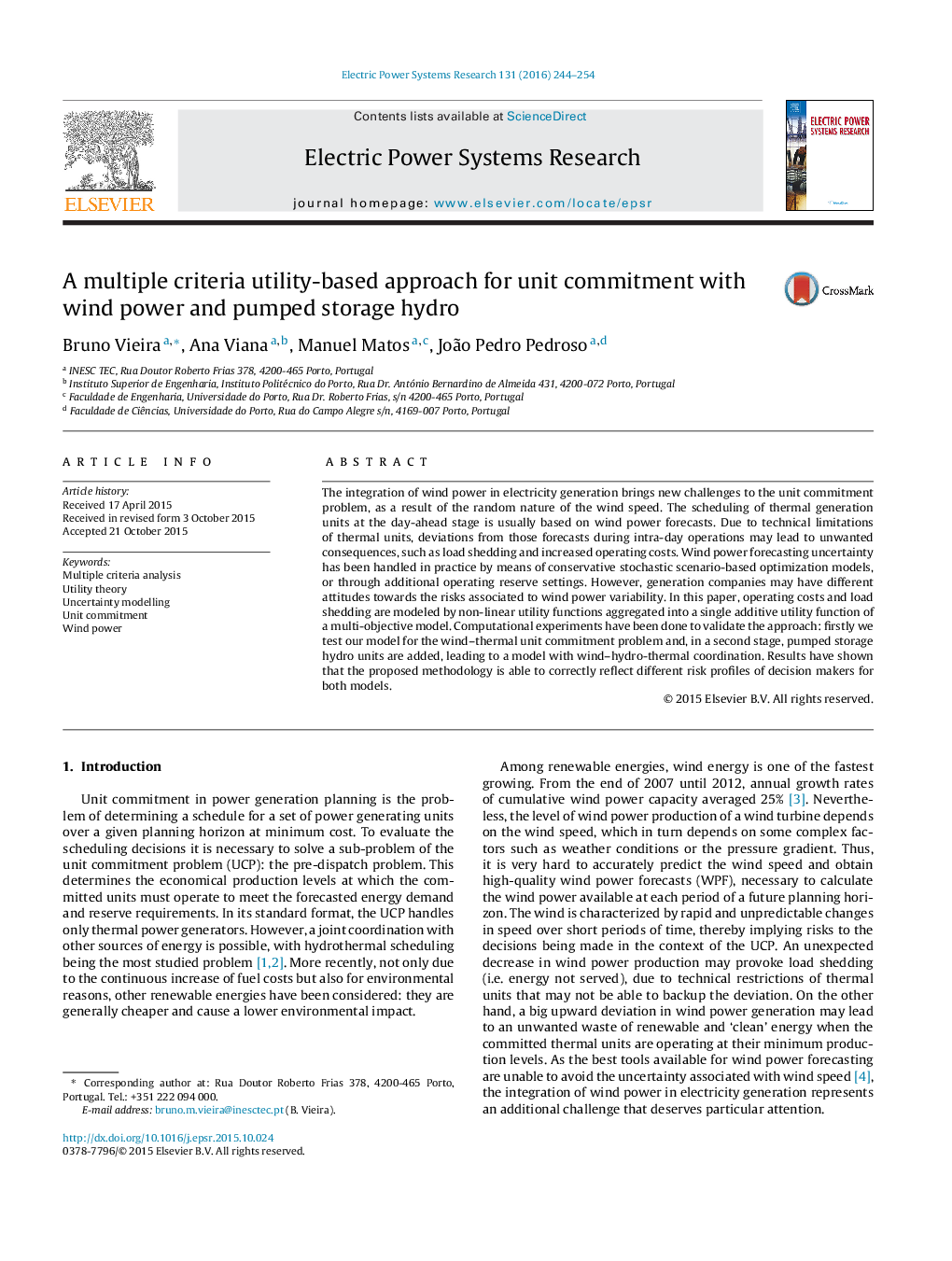| کد مقاله | کد نشریه | سال انتشار | مقاله انگلیسی | نسخه تمام متن |
|---|---|---|---|---|
| 704357 | 1460882 | 2016 | 11 صفحه PDF | دانلود رایگان |
• A stochastic multi-objective model that integrates complex preference structures.
• An adjustable non-linear utility function models different attitudes towards risk.
• The proposed MILP model directly leads to the most preferred solution.
• Computational experiments simulating different risk profiles are presented.
• The overall system's performance improved by including a pumped storage hydro unit.
The integration of wind power in electricity generation brings new challenges to the unit commitment problem, as a result of the random nature of the wind speed. The scheduling of thermal generation units at the day-ahead stage is usually based on wind power forecasts. Due to technical limitations of thermal units, deviations from those forecasts during intra-day operations may lead to unwanted consequences, such as load shedding and increased operating costs. Wind power forecasting uncertainty has been handled in practice by means of conservative stochastic scenario-based optimization models, or through additional operating reserve settings. However, generation companies may have different attitudes towards the risks associated to wind power variability. In this paper, operating costs and load shedding are modeled by non-linear utility functions aggregated into a single additive utility function of a multi-objective model. Computational experiments have been done to validate the approach: firstly we test our model for the wind–thermal unit commitment problem and, in a second stage, pumped storage hydro units are added, leading to a model with wind–hydro-thermal coordination. Results have shown that the proposed methodology is able to correctly reflect different risk profiles of decision makers for both models.
Journal: Electric Power Systems Research - Volume 131, February 2016, Pages 244–254
